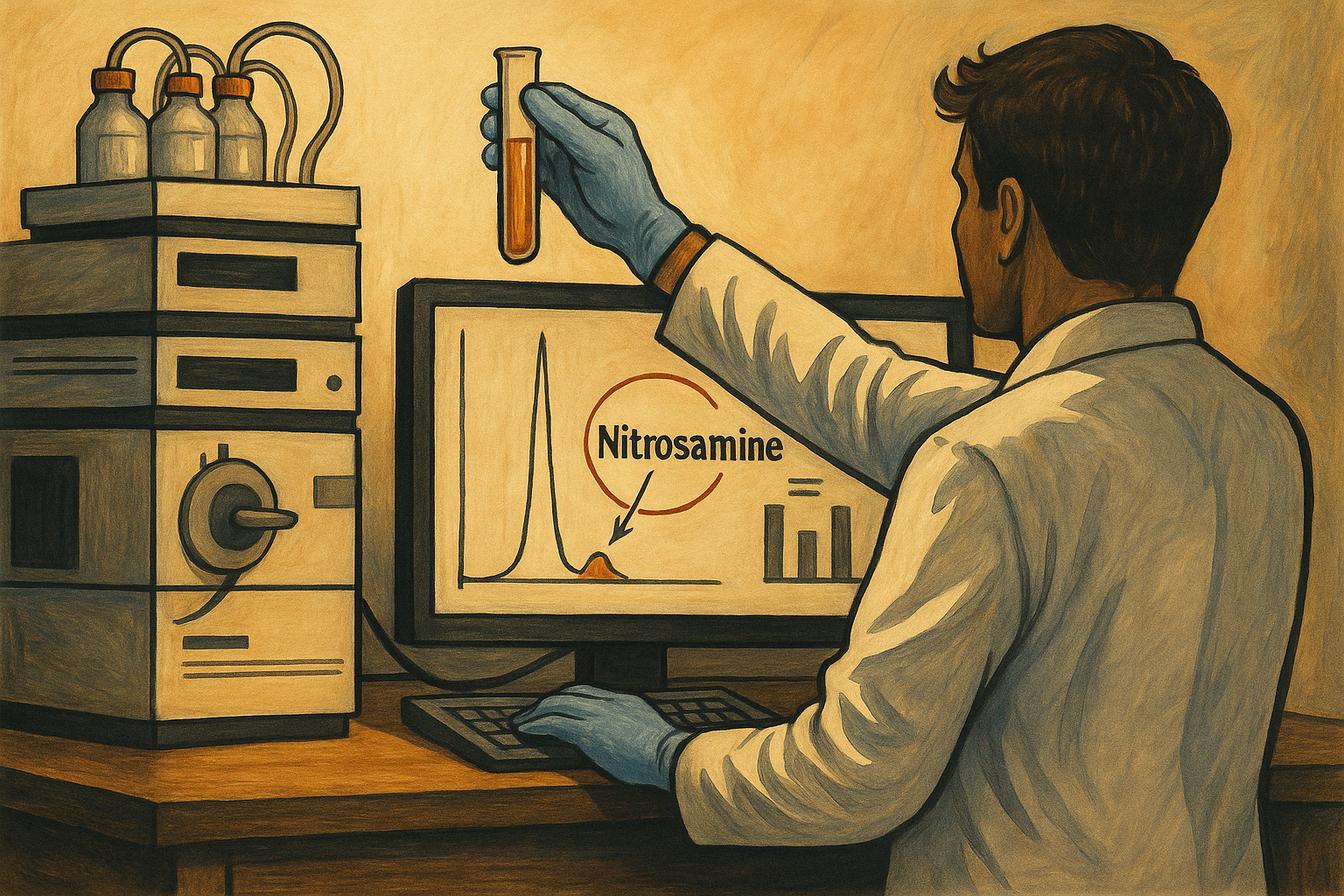Introduction
Nitrosamines have been identified as potential impurities in pharmaceuticals, raising significant concerns due to their carcinogenic properties. Regulatory agencies, including the U.S. Food and Drug Administration (FDA) and the European Medicines Agency (EMA), have intensified scrutiny on nitrosamine contamination in drug products, prompting manufacturers to implement risk assessment and mitigation strategies.
Sources of Nitrosamines in Pharmaceuticals
Nitrosamines can form through various pathways, often as unintended byproducts of chemical synthesis, degradation, or interactions between raw materials. One common source is the reaction between secondary or tertiary amines with nitrosating agents (e.g., nitrites, nitrogen oxides) under mildly acidic or high-temperature conditions. APIs containing amine moieties or manufactured using amine-based reagents are particularly susceptible to forming Nitrosamine Drug Substance-Related Impurities, or NDSRIs. Additionally, contaminated solvents, catalysts, or excipients—such as lubricants or dyes—can introduce nitrosamine precursors into the production process. Cross-contamination from equipment or recycled materials may also contribute to the problem. After synthesis, nitrosamines can form during storage if drug products are exposed to nitrite-containing packaging materials or environmental factors like humidity and heat. Understanding these sources is critical for conducting thorough risk assessments and implementing preventive controls.
Risk Assessment and Analytical Detection
A proactive risk assessment strategy is essential for identifying potential nitrosamine formation early in drug development. This involves evaluating the chemical structure of APIs, manufacturing processes, and raw materials for nitrosamine risk factors. Tools such as the European Directorate for the Quality of Medicines (EDQM) nitrosamine risk assessment template or FDA guidance documents can help structure these evaluations. Once risks are identified, sensitive analytical methods—such as liquid chromatography-tandem mass spectrometry (LC-MS/MS) or gas chromatography-mass spectrometry (GC-MS)—should be employed to detect nitrosamines at trace levels (often in the parts-per-billion range). Method validation is crucial to ensure accuracy, precision, and specificity, particularly given the low acceptable limits for nitrosamines like N-nitrosodimethylamine (NDMA). Companies should also consider stability studies to assess whether nitrosamines form over time in the final product.
Mitigation and Regulatory Compliance
To minimize nitrosamine risks, manufacturers should implement preventive measures such as substituting high-risk reagents, optimizing synthesis conditions, and introducing scavengers to inhibit nitrosation reactions. Supply chain controls, including rigorous vendor qualification and raw material testing, are equally important. Regulatory agencies expect companies to conduct thorough investigations and take corrective actions if nitrosamines are detected above acceptable thresholds. This may involve reformulating products, modifying manufacturing processes, or even recalling affected batches. Staying abreast of evolving regulatory guidelines, such as ICH M7(R2) on mutagenic impurities, is critical for compliance. By adopting a science-based, risk-managed approach, pharmaceutical companies can safeguard patient health while maintaining compliance in an increasingly stringent regulatory landscape.
Rondaxe Pharma: Your Partner in Nitrosamine Risk Mitigation
Rondaxe Pharma’s expert consulting services help sponsor companies proactively assess, and mitigate nitrosamine risks in APIs and drug products. Our team of scientists conducts comprehensive risk assessments, leveraging industry-leading guidelines (FDA, EMA, ICH M7) to identify potential nitrosamine sources. We recommend process improvements to minimize contamination risks, leveraging our deep expertise in impurity control and regulatory compliance. Partner with us to safeguard your pipeline and maintain compliance with confidence.






